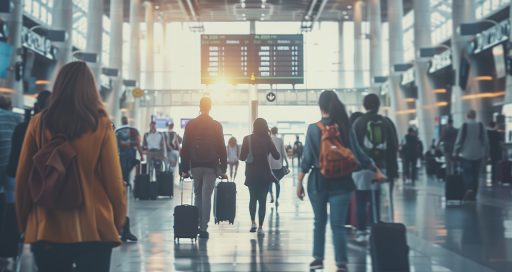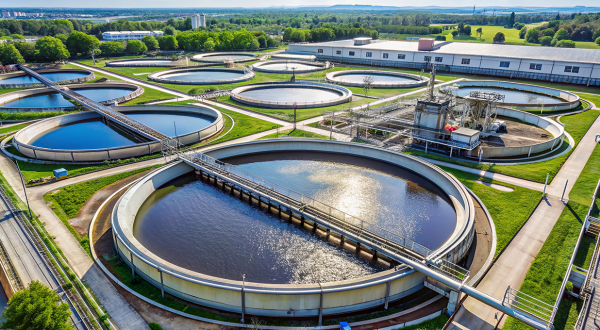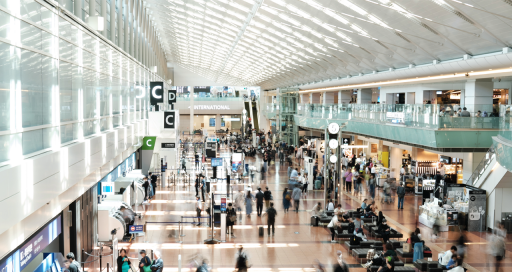From process improvement and sustainable development to connectivity, safety and security – growth in air traffic is creating immense challenges for airports. But solutions do exist, and they require specific expertise.

Five years on from the Covid‑19 pandemic, the air transport sector is back stronger than ever. According to the International Air Transport Association (IATA), airlines worldwide will carry more than five billion passengers this year. Their revenue is likely to increase by 4.4% to surpass a trillion dollars for the first time. This is a spectacular recovery following losses of over 183 billion dollars recorded between 2020 and 2022.
In the wake of this boom, airport business is also showing strong results. “Overall, European airports have seen a 7.4% traffic increase in 2024, and we are now above pre-Covid levels,” confirms Olivier Jankovec, Director General of the Airports Council International (ACI Europe).
But the traffic dynamics have changed. International travel is now clearly driving the market (up 8.8%), with domestic activity only increasing by 2.5%. “This reflects structural change in the air transport market,” says Olivier Jankovec, “with a shift toward rail in domestic travel on one hand, and on the other, international flights boosted by a range of factors: strong demand for leisure travel, the business policies of the low-cost airlines, the consolidation of airlines, and heightened geopolitical tensions.”
Finance needs
This renaissance in the airline sector augurs well economically, judging by the latest ACI Europe study on the economic and social impact(1) of airport activity: “At European level, the sector’s economic contribution is €851 billion, 5% of European GDP,” says the Director General. “Air connectivity is clearly a powerful vector for growth in commerce, tourism, productivity and the attractiveness of investments. For every 10% increase in air connectivity, we see a 0.5% increase in GDP and 1.6% more jobs.”
“The airport sector’s economic contribution is 5% of European GDP.”
Given the strong growth expected in the sector, airport capacity needs will be considerable. Olivier Jankovec continues: “If the lack of massive aid to the sector – which has seen its debt rise by 30% since 2019 – continues, in 2050, over a million flights will be lost due to a lack of airport capacity. European airports will require €340 billion in investment between now and 2040.”
Sustainable fuels and process optimisation
In addition to the capacity issue, an equally important challenge is the increasing cost of air transport due to decarbonisation policies, which will need to be further intensified. Olivier Jankovec notes that “The most pressing issue in this area is to create a manufacturing sector for sustainable and competitive fuels, because these fuels currently cost between two and seven times more than kerosene.”
From 2025, aircraft are required to use 2% sustainable fuel, and this will increase to 20% in 2030 and to 70% in 2050. However, in 2024, just one million tonnes of sustainable fuel were produced worldwide, equivalent to 1% of global fuel consumption. “The target is to reach 400 million tonnes by 2040,” says Olivier Jankovec. This type of fuel could contribute up to 56% of the sector’s CO2 reduction efforts.
Another not insignificant lever, pending the invention of carbon-neutral aircraft in the long term, is the renovation of fleets using existing technologies (20% of the decarbonisation effort). But the delays occurring in deliveries of new aircraft are not encouraging. Processes within airports also require improvement in terms of traffic, safety and security. “In these areas, automation and digitalisation are opening up new horizons, largely thanks to AI, particularly in managing passenger and baggage flows,” says Olivier Jankovec, though unfortunately “Europe is lagging behind in this respect and lacks a centralised approach to testing and certifying new technologies.”
But airport operators remain undeterred, implementing solutions to address the challenges facing an entire sector, with the mobilisation of advanced specialist expertise.
Key Figures
- 5%: Increase in European air passenger traffic between 2018 and 2040 (Source: ACI World Airport Traffic Forecast)
- 8 European airports among the top 20 worldwide in terms of hub connectivity (Source: ACI EUROPE has now released the Airport Industry Connectivity Report 2024)
- 51% of the world’s most overcrowded airports are in Europe (Source: IATA Worldwide Slot Guidelines)
- €12.3 billion: Investment deficit in European airports 2019–2023 (Source: G20 Global Infrastructure Hub)
17/04/2025





